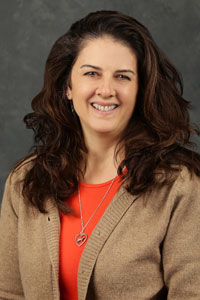
A few months ago, something caught my eye. One of our older cows calved with a nice heifer calf, and a day or so later, the cow’s daughter calved as a first-calf heifer. Well, that is interesting, I thought. What are the odds that can happen?
Evidently, the chances got better this month. As I entered the new births into the computer, I noticed an older cow calved with a heifer calf and that cow’s daughter calved with a heifer calf on the same day, just a short time apart from each other.
Now, that was crazy. If Duane had tried to sync either of their breedings to have them calve so close together, it would never have happened. And in all our years of breeding cows and birthing babies, I do not recall this ever happening.
It is not a big deal — it just made me smile. We are big on following cow families, longevity, consistency, and continuing with good genetics.
However, after we put the straw of semen into our animal, there are a lot of factors that are not left up to us. We have to wait and see whether the heifer or cow will settle. Then, there is the unpredictable date and time that the animal will actually start labor.
I can control where the cow calves, how much I want to assist, and the amount of bedding that is available to the animal. I cannot control the time of day that the baby decides to first see the light of this world.
There are a lot of things in our control and a list of best-management practices that we follow, but there is also a lot that is not up to the dairyman. In other words, there is a lot that we leave up to nature. It was the fact that so much of what Duane and I can’t control lined up in the birth of this mother-daughter duo that made me smile.
We were at the Pennsylvania Dairy Summit this past month and as always, the speakers, breakout session, and networking with our dairy friends was valuable. One of the coordinators had some great advice as the summit came to a close. “Bury the ‘can’ts’ and focus on the ‘cans,’” said Jayne Sebright, executive director for the Center for Dairy Excellence. She went onto explain that we need to focus on the circumstances that we can change, not the things that we can’t control.
That was great advice for me right now. It is truly sad as we have friends and neighbors leaving the industry differently than they anticipated 10 years ago. It is frustrating when we can’t stay ahead of our bills each month.
Sebright is right. I need to readjust my focus. I feel better and sleep better if I keep myself in a positive state of mind rather than a negative one. I also know firsthand that is easy to say and not so easy to complete.
Our friend and neighbor has been a good example on how to focus on the things he can change and not the uncontrollable aspects of his life. Rusty and his family have been friends of Duane and mine for quite some time. In fact, Rusty worked for us for a number of years, helping us with the farm’s reproduction and breeding. His oversight has helped us tremendously, and even though he is not technically an employee anymore, he continues to assist with our reproductive needs.
Rusty is a great Holstein breeder. It was a sad day when he said that he was selling his cows and his farm. He will continue with his embryo transfer business, but he is changing his career path and stepping away from milking cows. This is certainly not a unique decision in these times.
Watching Rusty and Heather take this step has not been easy, and it has been even more difficult for them; but seeing how he focused on the things he can control and not on the things he can’t has been an encouragement and inspiration to me. I know other people are also inspired from his positive outlook of an uncontrollable situation because it has been the talk of the town. It is obvious that their family’s faith is a huge contributor to his attitude.
None of this means it was an easy, quick, and heartless decision. None of this means he doesn’t have to readjust his focus from time to time. None of this means he isn’t genuine with his emotions. He is just following a pathway that looks to the things he can change, not the things he cannot.
Every farmer in the dairy industry has had to look down that pathway. I have heard time and again that this is the toughest time the industry has ever seen. I agree that these times are difficult in ways that we have never seen or anticipated. I can’t change the milk price, nor can I stick my head in the sand and leave my life to chance. I have a responsibility to our farm, family, and employees.
What I can do is follow Sebright’s advice and focus on my “cans.” Things like: monitoring my cost of production; making stronger, more thoughtful business decisions for the farm; being more intentional with a positive outlook; and leaning on my faith more and communicating my dairy story better to family and friends. Last, but most importantly, I can get rid of the “can’ts” that are weighing me down.
The author and her husband, Duane, own and operate a 550-cow dairy in Cochranville, Pa.






